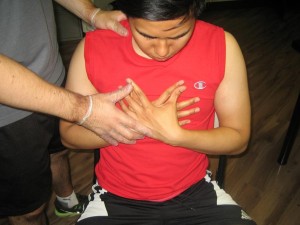Brain hypoxia occurs if the brain is not receiving sufficient oxygen. This can occur if an individual is choking, drowning, suffocating or experiencing cardiac arrest.
Other possible causes include brain injury, carbon monoxide poisoning and stroke. Remember that this condition is considered serious since the brain cells require continuous oxygen to function normally.
What are the causes?
Various medical conditions and circumstances can disrupt the flow of oxygen to the brain. Aside from cardiac arrest, stroke or an erratic heartbeat, other possible causes include:

- Hypotension
- Drowning
- Carbon monoxide poisoning
- Anesthesia complications during surgical procedures
- Choking
- Inhalation of smoke or carbon monoxide
- Strangulation
- Brain injury
- Travelling to areas with high altitudes
- Medical conditions that causes difficulty breathing such as asthma attacks
What are the indications?
The signs of brain hypoxia range from minor to severe.
The mild signs include:
- Brief memory loss
- Difficulty paying attention
- Diminished ability to move the body
- Difficulty with decision-making
The severe symptoms might include:
- Coma
- Seizure
- Brain death
Management of brain hypoxia
Always bear in mind that brain hypoxia requires prompt treatment to reinstate the oxygen flow to the brain.
The precise mode of treatment is based on the root case and seriousness of the condition. For mild cases brought about by mountain climbing, moving to a lower altitude can help. In severe cases, emergency treatment is necessary which involves a ventilator.
In some cases, the heart requires support. Blood products are administered as well as intravenous fluids. Prompt treatment can help lessen the chances of brain damage.
Drugs are also given for blood pressure issues or to regulate the heart rate. Medications for seizure control or anesthetics might also be part of treatment.
More Information / Disclaimer
The information posted on this page on brain hypoxia is for learning purposes only. Learn to recognize the signs and how it is managed by taking a standard first aid course with Toronto First Aid.
